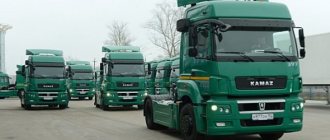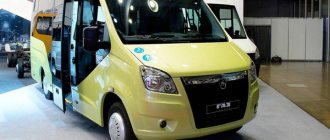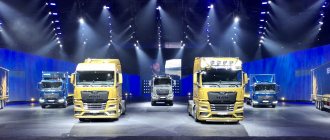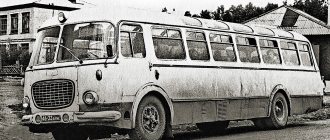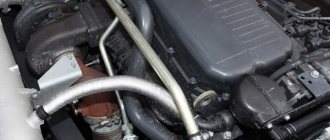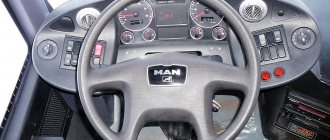Organization of a trophy fleet
Soviet soldiers next to Opel Blitz and Olympia cars
The use of captured vehicles by units of the Red Army began from the first days of the war. According to the most conservative estimates, in the first six months, the Germans lost 35 thousand trucks and 25 thousand cars. As a result of the winter counteroffensive near Moscow, the Red Army captured 15 thousand vehicles. Typically, captured vehicles were included in the units that captured them. From them freelance motor vehicle battalions were formed, where the number of cars was regulated only by their availability.
Vehicles often fell into the hands of the Red Army in a badly damaged condition requiring repair. In this case, vehicles that could not be repaired on site were sent to the rear to the repair bases of non-profit organizations and automobile industry enterprises. For example, MosZIS restored 14 thousand cars during its operation. Trophies unsuitable for restoration were dismantled into spare parts, which were sent to front-line warehouses for armored vehicles, the rest was sawn into metal.
Opel Blitz on the march
During the successful operations of the Red Army on the Volga in 1942-1943. 80.5 thousand vehicles were captured. Moreover, 70% of them were subject to restoration. However, by the end of the summer of 1943, the evacuation of captured cars to car factories was no longer carried out. Automotive companies were engaged in the repair and maintenance of domestic and Lend-Lease vehicles. Front-line bases and workshops were engaged in restoring enemy vehicles. After repairs, they were first sent to mechanized units.
It is not known for certain how many captured cars served in the Red Army. By the end of the war, their share in the troops was estimated at 9.1% (about 60.5 thousand vehicles).
Military must-have
Don’t let the car’s paint scare you: it has not undergone a normal restoration, but has been preserved in more or less decent shape since the forties. Of course, the car was painted, but, as they say, the color was not correct. There was no such task, the previous owner just really wanted to sell this truck. So the coloring is in some way “collective farming”, vaguely reminiscent of the original.
As befits trucks from the thirties (and not just trucks), there is not much metal in Blitz. The cabin frame is made of wood and only covered with thin metal. If desired, it can be shot from almost any small weapon. In addition, the gas tank is hidden under the seat, so driving the Blitz under fire is somewhat nerve-wracking.
The car is not very rich in optics. Of course, it has a head light, but the “stock” turn signals here convey greetings from the Charlie Chaplin era: they are folding flags.
Another “trick” of the car is hidden behind the radiator grille - instead of the blinds that are usually used to cover the radiator in cold weather, there is a soft damper secured with a chain stretched into the cabin.
On the wings you can see the “parking sensors” of that time - metal rods indicating the dimensions of the truck. Quite practical: no sensors, wiring or other electronic frills.
What other interesting things can you see outside? Perhaps nothing more. A set of canisters with a supply of fuel and water was a “must-have” for military vehicles of that time, and does not cause surprise. But the spare wheel mounting system under the rear overhang should be noted. As well as the jack attached next to the spare tire. If they had to be used in the mud, swear words addressed to Hitler came not only from Soviet soldiers, but also from German ones.
Well, it's time to look under the hood.
Depending on the load capacity, the Blitze could have two different engines with a volume of 3.6 and 2.5 liters. Our engine is the youngest, 2.5-liter. For the late thirties, it was a fairly progressive overhead valve inline six with an aluminum crankcase and a gray cast iron cylinder head.
True, this “progressiveness” on the Eastern Front brought a lot of inconvenience to the Germans: the engine refused to run normally on our gasoline, and when the temperature dropped, it couldn’t even be started. It was necessary to depower it in 1942, lowering the compression ratio. The engine became weaker and more voracious, but agreed to “eat” Soviet captured fuel. 40 liters per hundred in severe off-road conditions.
The gearbox here is four-speed, the clutch is a dry single-disc. There is also nothing interesting in the suspension: the axle and front beam are on longitudinal semi-elliptic springs and with double-acting shock absorbers.
Opel Blitz in the USSR
Red Army soldiers repairing an Opel Blitz, 1944
It should be noted that the range of the Wehrmacht vehicle fleet was very, very diverse. In addition to their own cars, the Germans had British, French, Czechoslovak, Italian and other cars from different European countries. German cars were not uniform either . Before the start of the war, the Wehrmacht had about 30 models of military-type trucks and a wide variety of civilian models. All this made it difficult to find spare parts and repairs. Against this background, the poor Soviet truck fleet, essentially consisting of two models: GAZ-AA/MM and ZIS-5, looked like a blessing.
The most common German truck was the three-ton Opel Blitz 3.6-36S. In terms of its overall design, this car was not a revelation for our mechanics. A standard two-axle truck with rear- or all-wheel drive and dual tires on the rear axle. Behind the double all-metal cabin there was an onboard platform on which it was possible to transport up to 3 tons of cargo. The Opel Blitz was equipped with a six-cylinder in-line petrol engine with a Solex carburetor and starter. Unlike domestic trucks, Opel cold started without pressing the accelerator pedal. In addition, the on-board electrical equipment of the truck operated at a voltage of 12V, as opposed to 6V on our vehicles. The classic spring suspension with hydraulic shock absorbers was quite durable in our conditions. The brakes, unlike Soviet cars, are hydraulically driven rather than mechanically driven.
Both ours and yours
The Opel Blitz appeared in Germany before the war. And its formidable name Blitz - lightning - has practically nothing to do with Blitzkrieg - the plan for a “lightning war”: it was simply, perhaps, one of the fastest trucks at the turn of 1930-40.
So, back in 1930, the Opel company, which was then under the wing of the American GM, began producing a commercial truck. Let us remember that the chairman of the National Socialist German Workers' Party (NSDAP), Adolf Hitler, was appointed Reich Chancellor of Germany only at the beginning of 1933, so there is no need to blame the Americans for helping this bad, loud guy with their trucks. They, as always, were just making money. At that time, Germany really needed inexpensive trucks with a carrying capacity of one ton, so GM, in the person of its Opel, took up the noble cause of building the right car.
But with Hitler's rise to power, everything changed a lot. Already in 1934, the factory in Brandenburg began to demand exclusively military trucks. And in 1940 the enterprise was completely nationalized. Since then, the Blitze’s hope of delivering bread and butter to stores (which, by the way, was not abundant in Germany at that time) has been shattered.
American factories that fell into the hands of the Nazis finally switched to producing military products. But, again, let’s not blame the Americans. Yes, the Blitz engine is a slightly modernized Buick (which, by the way, was installed in various modifications on both the passenger Opel Admiral and the Captain), and the car was designed not without the participation of GM specialists. But then no one could even think that initially commercial equipment would become purely military. In addition, Studebakers, Fords, and Chevrolets came to the USSR from overseas under Lend-Lease. And this was done voluntarily.
The Blitsey line was quite wide - with a carrying capacity from a ton to three and a half tons. There were also all-wheel drive versions that appeared on the eve of the invasion of the USSR: the German command realized that there was nothing to do with a single-wheel drive truck with a ground clearance of 22.5 cm in Russia. And yet the most common modification was exactly this - with a carrying capacity of 1.5 tons and with rear-wheel drive. And with a very “passenger” character.
Ford through Beda
This is how the name of the county of Bedfordshire is translated, and for the English company, General Motors’s development of the truck and bus segment turned out to be a ford. The original cars, assembled specifically for Europeans, received the prosaic name Bedford and excellent speed characteristics. The price for the 2-tonne WLG and WHG Bedford was £198 - not a lot of money even for that time. But the VY and VX passenger vans cost even less, and the niche between them was occupied by the 1.5-ton WS truck.
The company's model range multiplied like mushrooms after rain (in the "O" series alone there were 13 models, with a carrying capacity of 3-5 tons) - the cooperation between GM and Opel, concluded in 1929, played an important role in this rapid development, when Opel was threatened by the global economic crisis. Even then, many Bedfords were equipped with Opel engines, but the main engine was a gasoline 3-liter Chevrolet Stove Bolt 6, capable of developing up to 64 hp. (WT series).
War for Opel Blitz
The war demanded all wheeled vehicles, including commercial and civilian trucks, at its disposal, and those who won it received enemy factories. The Opel plant completely passed into the hands of the Americans, and the Bedford and Opel Blitz series, which developed in parallel, ended up in the same system. But another 20 years had to pass before the first Opel Bedford appeared, and the post-war Opel Blitz of '65 had the following characteristics:
- Load capacity – 1.9 tons;
- Diesel – Indenor XDP 4.90 (2.1 l, 78 hp);
- Gasoline engine – Opel Kapitän (1.6 l, 64 hp).
The Bedford CF saw little development as an ambulance, but remains in medical service to this day.
Despite the decent pace of development of the company, the Opel Blitz lost the competition to the Mercedes Benz T2 and was discontinued in 1975. The growing popularity of diesel engines led GM to try Indenor, but given the company's debts, it was decided to conduct further experiments at English factories. Production moved from the mainland to the island and soon the world became acquainted with the Opel Bedford truck.
More on the topic: Rare livestock vans
